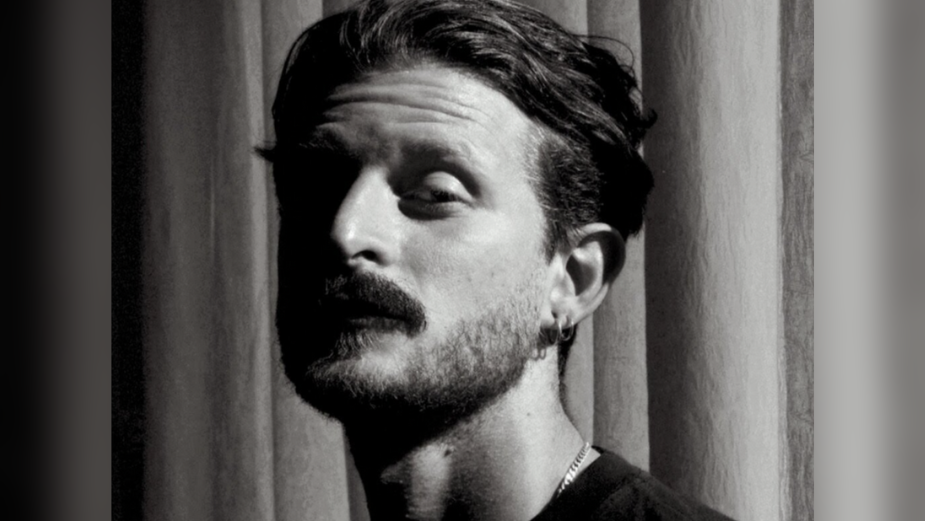
Making the Grade: Trusting Your Eyes with Luke Osborne

Luke Osborne is a colour grader whose work spans from fashion films to music videos. Living in cloudy countries like England and Holland all his life is what has driven him to draw exciting palettes out of all the films he touches. Osborne has an artistic background, parlaying his knack for photography and photoshop into moving images. He began his career at Glassworks Amsterdam and now resides as the in-house colourist at Splash Studios where he has worked on award winning projects with clients such as Nike, Adidas, and Adobe.
LBB> What was your first experience with the world of colour grading – and when did you decide that being a colourist was a role that you wanted to pursue?
Luke> I first experienced colour correction during a brief stint working as a retoucher– it was always my favourite part of the work. My love for it quickly grew from photography to moving image– so I set my sights on film and post production, and applied to be a runner at a post house in Amsterdam. As soon as I saw the Baselight Blackboard and the grade suite I knew I wanted to do colour.
LBB> What was the project that you felt really changed your career?
Luke> I think a big break was when I started at Splash Studios and I worked on a film for Van Moof. It was the first time I’d solely taken on a brand campaign from start to finish. I had the creative freedom to take it in my own direction, and it felt like the turning point in my career which saw me go from assistant/junior roles to colourist.
LBB> How/where did you hone your craft and did you have any particular mentors?
Luke> I learned about the full potential of colour at Glassworks Amsterdam. After going in as a runner and learning how post works, I eventually moved into the colour assistant role. Matt Hare was a huge mentor to me, right from my beginnings as a runner. He showed me how everything worked, what to look for when building a grade, and was always so enthusiastic to teach and to share what he knew. Matt really encouraged me to jump in the seat anytime I could to play around, get a feel for it, and really inspired me to stick with it and push myself. However, starting at Splash Studios was the moment I really stepped into the role of colourist, and was the place I began to hone the craft. It was here I got to delve into the artistic side of grade. Here I got to really put my creative foot first, work with directors and DOP’s for the first time, and have access to amazing footage for both film and commercial. I was given the tools and technical knowledge at other places, but Splash was the place where I was able to develop my eye and my work.
LBB> Tell us more about your creative process - (e.g.when you get a project, how do you go about developing a look?)
Luke> My approach completely varies when it comes to the process. I never go in with a set plan. I use references as guidelines, but sometimes I just let the footage take me. I’ll trust my own eye and push things around until it feels exciting to me. I like giving things a real punch, occasionally taking things too far before then pulling them back.
LBB> From experience, we’ve found that colourists often love art and photography - when you’re out of the studio, what inspires you?
Luke> Film inspires me a lot. I spend a lot of time at the cinema or watching documentaries, looking for reference and inspiration. Music documentaries and biopics about artists really motivate me. Music in general is a huge part of my life. There’s nothing I like more than watching a live show, or digging through some vinyls in the record shops around Amsterdam. Cover art really inspires me.
LBB> Colour grading is largely a digital affair, but there’s also been a resurgence of film over the past few years in commercials and music videos. What are your thoughts about working on film versus digital formats like 4K? And what are your favourite techniques for capturing a vintage or tactile feel?
Luke> To me nothing will compare to film. The way it reacts and the end result after colour will always be far superior to digital in my opinion. It has a texture and a nostalgic feel that just comes with the processing. That being said, some of my favorite grades have been ones where I get to replicate film on digital - combining textures, grains, and halation to build to that filmic look. This is a process which I find really fun!
LBB> When working in commercials, what role can colour and a grade play in enhancing a brand’s assets and what sort of conversations do you have with creatives and clients about that (e.g. is there often a strategic/consistent ‘look’ for a brand? Can these be too heavy handed?)
Luke> A lot of commercials rely on the colours and palette of the brand to come through. A good commercial will have factored this into the set design and the clothing worn in the ad from the art direction - so my role would be to bring those colours through and make them stand out more than anything else. Typically the approach to this is enhancing the strength of the brand colour, whilst taking everything else back or giving the rest of the scene opposing colours. Focus can be drawn using textures, like sharpening areas of importance whilst softening others. Using shapes and directing light also play a huge part in drawing the viewer's eye into certain areas of the image, and gives colourists the power to tell everyone where to look!
LBB> How do you ensure that each colourist-director partnership is a success?
Luke> I think by being humble, genuine, and being invested in every film you’re lucky enough to work on goes a long way. I feel really fortunate to be asked to finish any film, so showing that excitement and sharing in the director's passion for the project makes for a great atmosphere in the room. Some of the most rewarding colourist-director experiences are the ones where neither party knows how the film should look, but you get there together through sheer experimentation. A good playlist also doesn't hurt.
LBB> What advice would you give to budding colourist?
Luke> Stick with it. It can be a long road, and the learning and drive to improve is never ending - but It's also very exciting to know that you’re in a field where both you and the technology is constantly developing.
LBB> In your opinion, what’s difference between a good grade and a great grade?
Luke> Something that feels other worldly, the weirder the better! It could be magically ethereal, or something dark and ominous. A palette that I can't comprehend. Something that shouldn't make sense but does. I think a great grade is something I can’t quite wrap my head around, artistically or technically.
LBB> How is the craft and trade of colour grading changing?
Luke> Its getting more accessible to anyone that has an interest. If they really wanted to – any budding artist could get really good looking results from watching a few tutorials and working from home. Artists are emerging without having to start in a post house, or needing to spend years being assistants. The remote grade is also completely changing the process. With an email and a WeTransfer, you could have your favorite colourist finish your film from the other side of the world. Software is also constantly advancing, particularly DaVinci resolve which we currently work in at Splash Studios. Working in a shared project on DaVinci’s cloud with an editor now sees less of a need for xmls and conforming. The footage is prepped and the edit is made in the edit tab, and then colour is added right into the same timeline from a different tab. An edit can be happening while I work on the grade, and we’re both in the same project updating each other's changes in almost real time– it’s becoming easier and easier! Traditional workflows see clients working weeks until edit lock before moving onto colour, but now they can watch both things happen at once and visualize everything coming together right from the get go.












